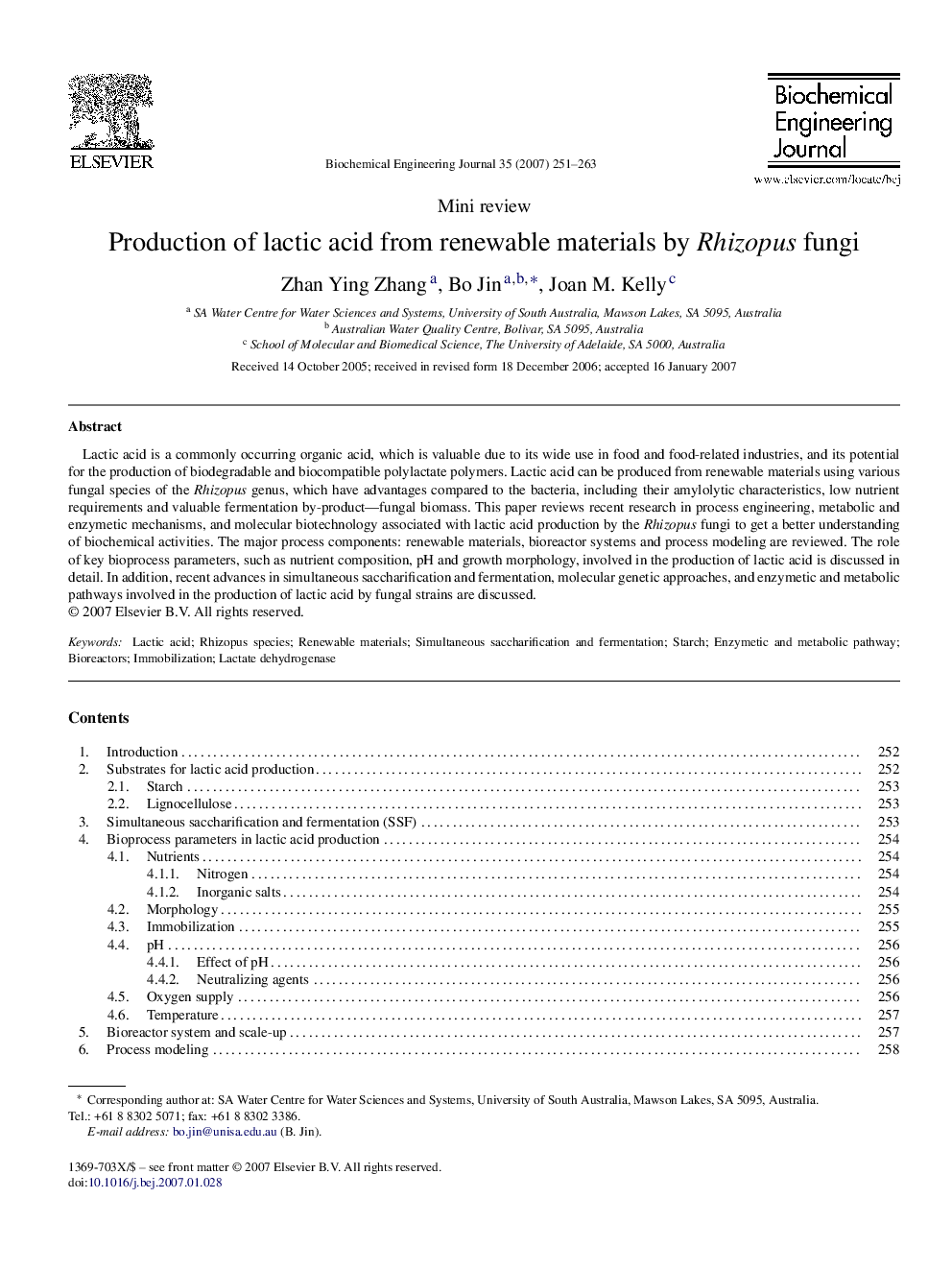| Article ID | Journal | Published Year | Pages | File Type |
|---|---|---|---|---|
| 4698 | Biochemical Engineering Journal | 2007 | 13 Pages |
Lactic acid is a commonly occurring organic acid, which is valuable due to its wide use in food and food-related industries, and its potential for the production of biodegradable and biocompatible polylactate polymers. Lactic acid can be produced from renewable materials using various fungal species of the Rhizopus genus, which have advantages compared to the bacteria, including their amylolytic characteristics, low nutrient requirements and valuable fermentation by-product—fungal biomass. This paper reviews recent research in process engineering, metabolic and enzymetic mechanisms, and molecular biotechnology associated with lactic acid production by the Rhizopus fungi to get a better understanding of biochemical activities. The major process components: renewable materials, bioreactor systems and process modeling are reviewed. The role of key bioprocess parameters, such as nutrient composition, pH and growth morphology, involved in the production of lactic acid is discussed in detail. In addition, recent advances in simultaneous saccharification and fermentation, molecular genetic approaches, and enzymetic and metabolic pathways involved in the production of lactic acid by fungal strains are discussed.
